Hugh Soar looks back over the history of the barrelled arrow
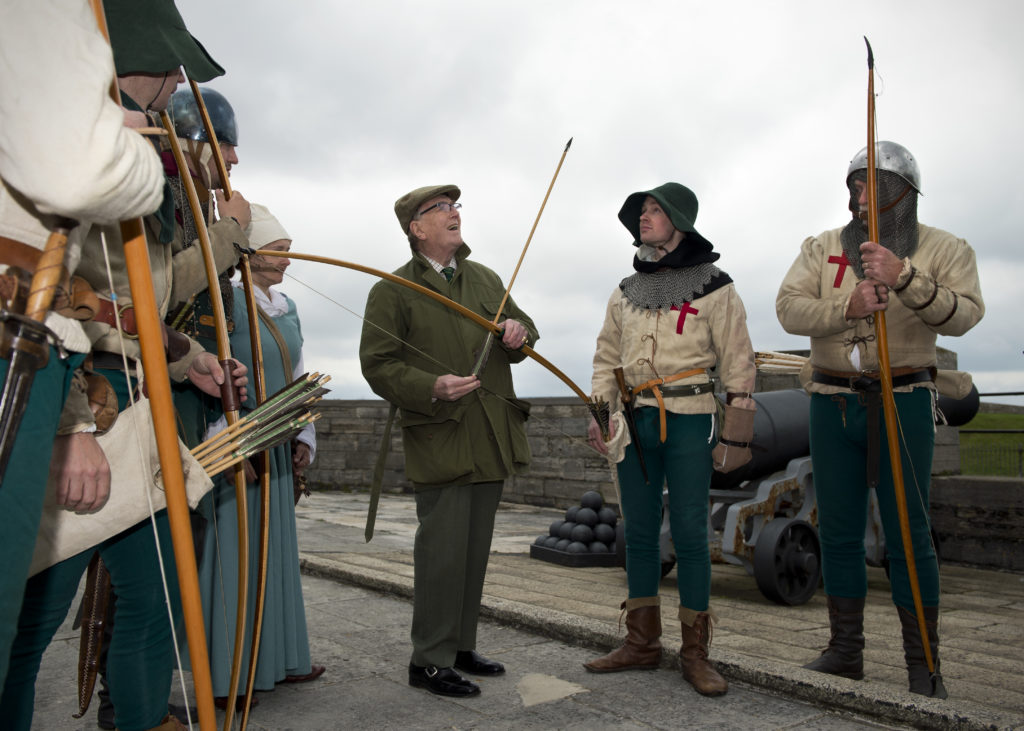
Of the five arrow profiles recovered from the Tudor warship Mary Rose, two are of particular note; those that taper from a thicker centre to both head and string nock, and those that taper from head and nock towards a central depression. They are known respectively as ‘barrelled’, and ‘saddled’ (alternatively ‘doubly barrelled’). The first has survived and the second has not. We will look at each in turn.
Although Roger Ascham, author of Toxophilus or The Schole of Shotinge is explicit on many aspects of equipment, and the barrelled arrow was almost certainly known to him, nowhere does he refer to it specifically, or in terms that we might understand.
We are therefore denied a contemporary assessment of its qualities and perhaps its especial purpose. He refers instead to two other well used profiles: those which taper from head to string nock, which he terms ‘rush-grown’ but notes that “some merry fellows call bob-tailed”. It is this latter term that today’s ‘merry fellows’ have chosen, and the description has passed into every-day ‘archery speak.’ The other profile he mentions is breasted or chested, tapering from the nock down to the head.
Whilst not specifically recognising barrelling, Ascham does pay attention to both big and small breasted shafts, by which we may perhaps understand the present-day target and clout arrows. Curiously however, the ‘bigger breast’ he relates to ’forehand’ (alt: over-hand) arrows, ie, those shot with the mark or target above the bow hand; an enigmatic comment, since it is the distance shaft which today is called breasted or chested.
For clarification we turn to Thomas Roberts, writing on the cusp of the 18th and 19th centuries. In his The English Bowman he describes a breasted arrow as largest in the middle, calling it alternatively ‘high chested’ and it is this profile which seemingly we today recognise as barrelled.

So, when Ascham refers to big-breasted shafts, is he in effect referring to the barrelled profile? He does mention their steady flight, a particular characteristic of the barrelled arrow. But let us leave it there.
Returning to the warship Mary Rose. The Anthony Roll (ship’s manifest) for arrows carried records 400 sheafs of ‘livery’ arrows, amounting in total to some 9000 shafts. Of these, 2303 have been recovered complete, together with numerous other fragments. Whilst many were found scattered loose upon the various decks, seven arrow boxes with contents were discovered; and these are examined in minute detail within part 2 of the archaeological report of the Mary-Rose Trust, where thirty-five pages are devoted to every aspect of the arrows recovered.
The contents of three of the more complete boxes/chests have been analysed, and of the 609 arrows contained within, 268 were bob-tailed, 168 were straight, 114 were barrelled and 32 saddled (of which more later) and just 27 breasted.
A random examination of 171 arrows checked for wood used revealed that of 33 barrelled profiles sampled, nineteen were of poplar, seven were of birch and seven of alder. As a relevant aside, despite Ascham’s conviction that ash was by far the best military arrow wood, just one sheaf of ash shafts was recovered; poplar being by far the most popular.
In the matter of length, the Mary-Rose Inventory does not distinguish between profiles – the standard length appears to have been 30 inches to end of cone, giving an assumed overall length with head fitted, of 32 inches. The next popular length was 28 inches.
As an aside, it is interesting to consider whether sea-faring archers were chosen for their shorter stature, with consequent shorter draw-length, as opposed to their shore based colleagues. Those who have stood on the gun deck of HMS Victory in Portsmouth Dockyard will understand perfectly.
Although the term barrelled is in common usage today, it has no great antiquity, being coined during the latter part of the nineteenth century, when the profile was re-introduced by Thomas Aldred. It caught the attention of a number of celebrities including six times national champion, Major Fisher.
Top flight archer Perry Keene, commenting in the Archer’s Register offers three advantages of, and reasons for the success of, the barrelled profile. They are, he says, “a lower flight path owing to its smaller point offering less resistance to the air.” Secondly “the pile being smaller, it is easier to aim with” and “weight for weight it is stiffer.” No mention of the smoother flight – in fact the very opposite is claimed!
The disadvantage of its shape, he says, is “it cannot move smoothly against the bow limb, and, shot off the hand can be distinctly felt upon release”- and this he claims “affects the steadiness of the flight.”
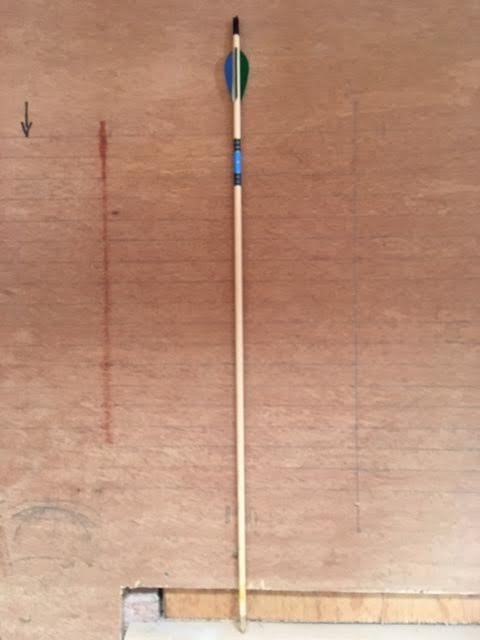
Despite the views of recognised experts, who saw virtue in the profile, and present-day preference for barrelling of the shaft, it did not sit favourably with perhaps the greatest 19th century champion, Horace Alfred Ford.
He dismissed it because, in his view “the shape, by providing a central high spot on the shaft does not allow an even passage past the limb of the bow. Therefore none other than the straight shaft is recommended.”
Major Fisher may not have agreed with him. A glance at his average scores in Archer’s Registers for 1881 shows 105 hits, 473 scored, whereas that for 1883 shows 188 hits, 801 scored, and for 1884 shows 198 hits, 921 scored. A considerable improvement, arguably helped by his adopting the barrelled shaft. As the late, lamented Wilfred Pickles used to say “What can’t speak can’t lie!”.
So, why is barrelling advantageous? It has to do with a fundamental feature of an arrow: its centre of gravity. A modern parallel (straight) target arrow has its point of balance or centre of gravity about one to two inches in front of its geometric centre (middle) and in consequence of this, deflection upon release is significant, marked in many cases by a distinct ‘wiggle’ in the initial flight.
The barrelled arrow, being stiffer in the centre, has its centre of gravity closer to the middle, deflection is less, and flight is truer. The increase in weight affects initial velocity however, and the point of aim needs to be adjusted accordingly. Barrelled arrows need lower fletches since the line of flight is truer, and this, combined with the raised centre, reduces drag.
Two other factors may affect flight. The nocking point and the tab – release aids are of course frowned upon in longbow archery. A badly positioned (low) nocking point will cause the arrow to strike the hand – dangerous if the forward edge of the fletching is not secure. A stiff new tab, or an old curled one will also affect the string traverse, as will a glove. As an aside, those with access to a copy of the Bowman’s Handbook, produced annually for several years by Patrick Clover, editor of The British Archer, will find helpful advice in various articles on this subject by Lt. Cdr. Bill Paterson, an acknowledged expert in ballistics.
Turkish arrows, particularly the Ottoman-era flight arrows, were well known to be aggressively barrelled. The authority Payne-Gallwey noted, examining some in the last century, that the point was only 1/8 inch in diameter, with the part of the shaft to which the feathers were attached 3/16 inch in diameter, and the centre of the shaft a whopping 5/16 inches wide.
So far we have noted the barrelled shaft; it is now time to widen our interest and consider that enigma of medieval profiles, the ‘saddled’ shaft (alt: the ‘doubly barrelled’ shaft. A significant number of these were recovered from the Mary Rose, their profiles being marked by a central ‘dip’ ending in a substantial half-inch foot, capable of carrying a heavy military head, or – as has been suggested – a fire head.
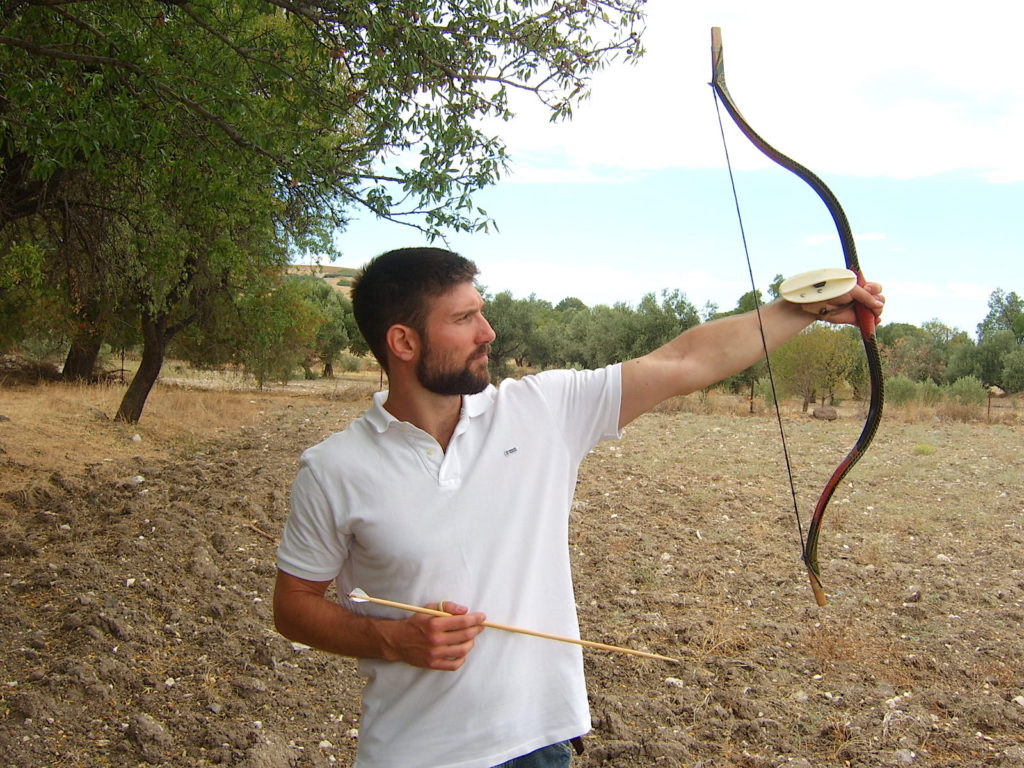
There is evidence for the presence of combustible material on board, and this and its purpose is discussed in detail by Alexzandra Hildred, Senior Archaeologist of the Mary Rose Team, again within part 2 of the Archaeological Report. Essentially a parallel shaft with the central ‘dip’ (the saddle feature) would provide a degree of flexibility in its passage past the bow.
If this profile had a specific purpose, as seems possible, then it would have ceased when that purpose was no longer appropriate.
This lends some validity to its potential as a fire arrow; although it could have as readily carried a heavy military head, as did the bob-tailed shaft, and may have been discarded because of inadequate comparative performance.
We shall never know, and it remains a medieval enigma.
The Easton X10: staying on top
The modern incarnation of barrelling in arrows is the Easton X10, developed in the mid-90s by Jim Easton and George Tekmitchov, specifically for long-distance shooting.
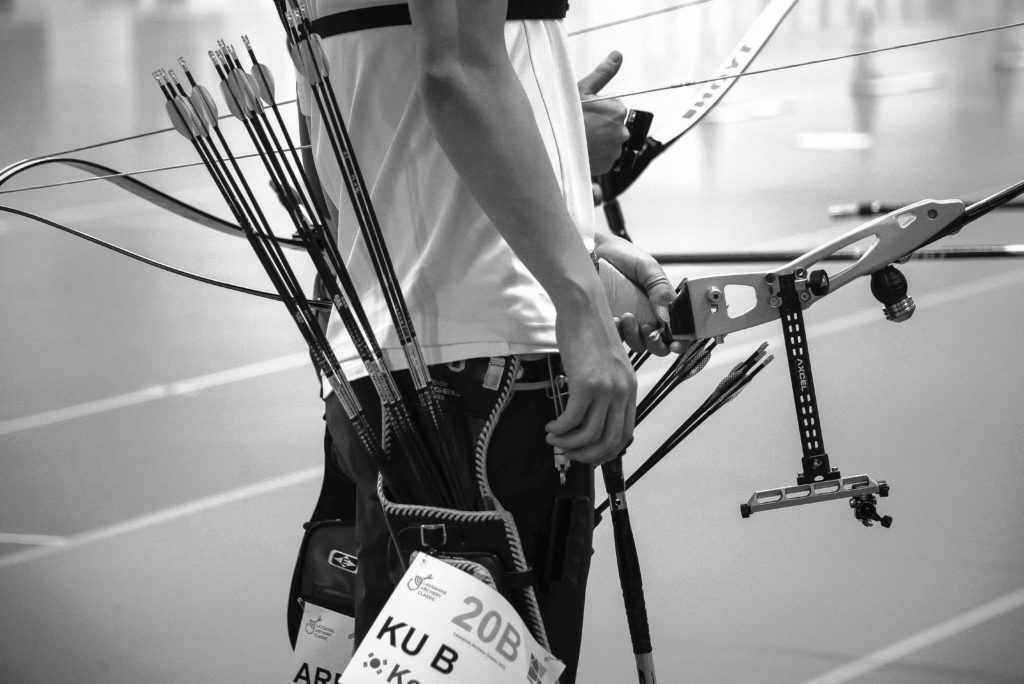
Since then, it has been extraordinarily successful, particularly in the context of the Olympics, then as now the pinnacle of the recurve sport. (Easton usually run a wry ad in the wake of every Summer Games, pointing out that once again, every archer on the podium used their product to take a medal. )
Tapered shafts have been in use for thousands of years. By tapering and thinning the back of the arrow and keeping the same diameter in the front of the shaft, arrows gain better performance. A tapered shape reduces drag while producing a higher front-of-centre balance, essential for good ballistics.
Fully barrelled shafts, where the front half tapers to a point, creating three distinct ‘zones’ on the arrow, also dates from antiquity. But barrelled arrows until very recently were custom made, one-off sets. Jim Easton experimented for decades, but it took many years for the technology to catch up to the point where barrelled arrows could be manufactured to the tolerances required for top level archery.
The difficultly in manufacturing is one of the reasons for the high costs involved, certainly compared to manufacturing parallel shafts. Each spine requires a separate approach, custom materials, shape and flex pattern.
George Tekmitchov explains. “We had developed a theory that the arrow needed to better match the string frequency range of recurve bows (which frankly hasn’t changed much since the 1990’s) to provide for better shot to shot consistency. This meant, among other things, making the shaft heavier rather than the trend throughout the industry which at the time was driving toward lighter and lighter shafts, a mistake made by a number of competitor firms at the time.”
“We first proved this with special heavy ACE arrows made for the 1992 Olympic Games, and used by a number of archers there. I also created the first forward-balanced tungsten points at that time, to help maintain FOC balance with the heavier shafts.”
“This extra mass had many additional benefits, especially in windy conditions. I also selected a new tail spine differential after extensive testing. This specific tail spine ratio proved to be the most forgiving in real world testing, and is unchanged from the initial prototype X10’s produced early in 1995.”
Following on from the barrelled A/C/E, which was introduced in 1987 and used by Jay Barrs to win the 1988 Olympic Games, the X10 was released in 1995 and since then has won every Olympic Games gold medal. All of them. It has also set every outdoor world record achieved since then. It is fairly extraordinary to a single product to dominate this long unchanged.
The smaller diameter of the X10 shaft presents less surface area and a smaller cross section to the wind which is very helpful in difficult conditions at longer distances.
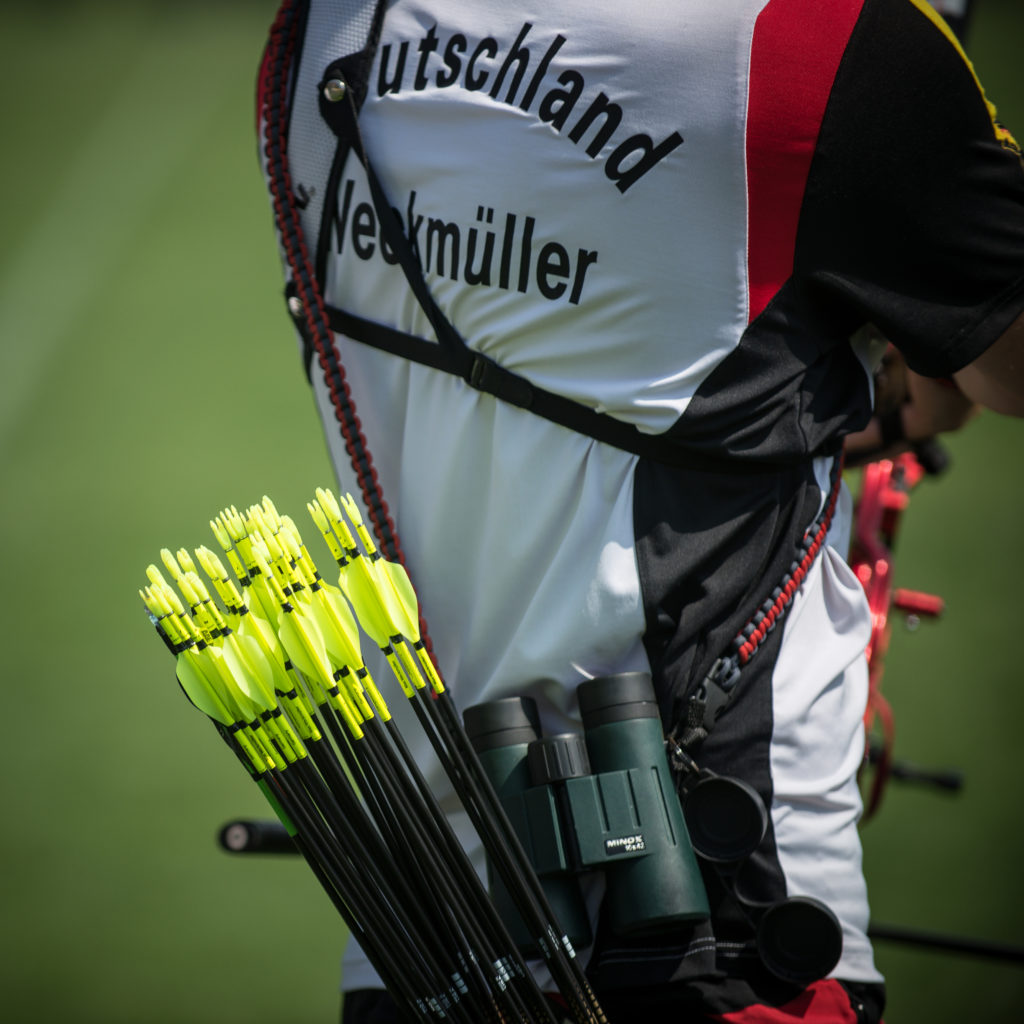
More importantly, the X10 has a high ballistic coefficient – it correctly balances mass weight and momentum for better performance from recurve bows at distance, especially in windy conditions.
In earlier years, the X10 was shot by compound archers with the rearward taper portion partly removed to stiffen up the arrow – compound archers do not benefit from a rear taper which assists in bow clearance and makes finger releases more forgiving. The experiences with compounders using the X10 eventually lead to the development of the Easton X10 ProTour arrow.
The X10 extraordinary dominance, particularly among recurve shooters, is remarkable for a 25 year old product. A handful of other companies are starting to make inroads into the market, but the X10 has developed a kind of totemistic power since then. In Tokyo next year, it is almost a 100% certainly that the new Olympic champions standing on the podium will be wielding X10s.
Many thanks to George Tekmitchov for additional information.


I think the argument about centre of gravity is pretty confused. The COG is dependent on the mass distribution, not the stiffness. Though of course a barrelled shaft is *both* heavier and stiffer in the middle. But also the COG is massively affected by the mass of the head. Finally there is no reason to think that a more central COG results in less “wiggle” or smaller fletches. In fact the converse is true: the further forward the COG, the smaller the fletches can be for the same straightening effect. However, moving the COG back can increase lift. Lift is not something that is of much interest to target archers but it is of interest to flight archers and maybe also for archery in war.